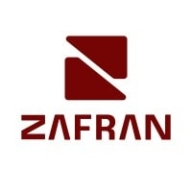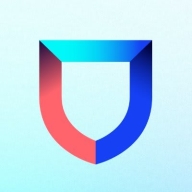


Tenable Vulnerability Management and Lacework FortiCNAPP compete in vulnerability management and cloud security. Tenable stands out for vulnerability scanning and integration, while Lacework is preferred for anomaly detection and compliance features.
Features: Tenable is renowned for its stability, scalability, and integration with third-party tools, providing a comprehensive visibility across both on-premise and cloud assets. Continuous monitoring is effective for remote work scenarios. Lacework excels in compliance capabilities and anomaly detection. It supports multiple standards and offers in-depth insights into vulnerability management, automating monitoring processes and alleviating compliance burdens for organizations.
Room for Improvement: Tenable needs to enhance dashboard navigation and simplify its interface for SMBs. Its reporting and user interface can be more accessible. Lacework requires improvements in data governance visibility and simpler setup configurations. Better alert filtering and integration with third-party tools are areas needing attention.
Ease of Deployment and Customer Service: Tenable supports hybrid, on-premise, and public cloud environments, though its support services receive mixed reviews regarding response times. Lacework focuses on public and private clouds, with satisfactory customer service, yet could simplify alert configuration and communication of product updates.
Pricing and ROI: Tenable is seen as costly for smaller businesses but offers long-term ROI and comprehensive visibility. A flexible pricing model could enhance its appeal. Lacework provides competitive pricing with potential discounts and adaptive licensing options, making it manageable for early adopters despite Tenable’s robust functionality.



Zafran Security integrates with existing security tools to identify and mitigate vulnerabilities effectively, proving that most critical vulnerabilities are not exploitable, optimizing threat management.
Zafran Security introduces an innovative operating model for managing security threats and vulnerabilities. By leveraging the threat exposure management platform, it pinpoints and prioritizes exploitable vulnerabilities, reducing risk through immediate remediation. This platform enhances your hybrid cloud security by normalizing vulnerability signals and integrating specific IT context data, such as CVE runtime presence and internet asset reachability, into its analysis. No longer reliant on patch windows, Zafran Security allows you to manage risks actively.
What are the key features of Zafran Security?
What benefits can users expect from Zafran Security?
In industries where security is paramount, such as finance and healthcare, Zafran Security provides invaluable protection by ensuring that only exploitable vulnerabilities are addressed. It allows entities to maintain robust security measures while allocating resources efficiently, fitting seamlessly into existing security strategies.
Lacework FortiCNAPP provides robust cloud security, combining vulnerability management and multi-cloud insight with user-friendly controls, machine learning detection, and compliance support.
Lacework FortiCNAPP specializes in cloud security by merging machine learning anomaly detection with agent-based vulnerability management to offer detailed alerts and compliance reports. Its comprehensive approach allows continuous monitoring across AWS and Kubernetes, providing insights from an attacker's perspective. The platform offers automation and seamless Slack integration, facilitating collaborative and efficient cloud security management. Users value its ability to handle multi-cloud environments and scan IAC scripts, configurations, and compute nodes across AWS and GCP.
What are the key features?Organizations across sectors leverage Lacework FortiCNAPP for cloud security, focusing on compliance, security posture, and vulnerability management. It is widely used for monitoring AWS and Kubernetes environments, scanning IAC scripts, configurations, and securing compute nodes. It supports multi-cloud security posture management and log ingestion, enabling companies to maintain strong cloud infrastructures without dedicated security layers.
Managed in the cloud and powered by Tenable Nessus, Tenable Vulnerability Management (formerly Tenable.io) provides the industry's most comprehensive vulnerability coverage with real-time continuous assessment of your organization. Built-in prioritization, threat intelligence and real-time insight help you understand your exposures and proactively prioritize remediations.
We monitor all Vulnerability Management reviews to prevent fraudulent reviews and keep review quality high. We do not post reviews by company employees or direct competitors. We validate each review for authenticity via cross-reference with LinkedIn, and personal follow-up with the reviewer when necessary.